Nakayama is in between Narita And Haneda International Airport
<クッキーについての同意並び欧州居住者向けプライバシーポリシー>
中山・下総・散歩道
Th Hoden-mon Gate In Nakayama Hokekyo-ji
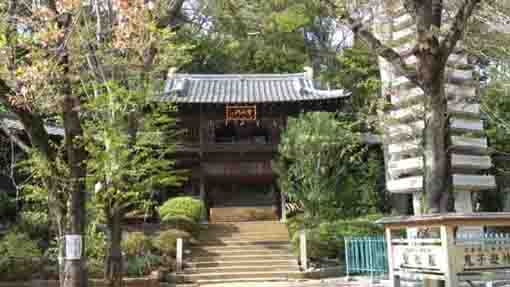
Hoden-mon Gate In Nakayama Hokekyo-ji
The behind of the Soshi-do hall, the Hoden-mon Gate stands between the Soshi-do hall and the Aragyo-do Hall, so it is also bridge connecting them to the Taikyaku-den, the main hall.
This is the popular spot for visitors sketching and taking pictures in Nakayama Hokekyo-ji. Especially, many visitors come to see it with beautiful cherry blossoms in Spring.
The Bell Tower And The Hall To Pray For Vehicles In Nakayama Hokekyo-ji
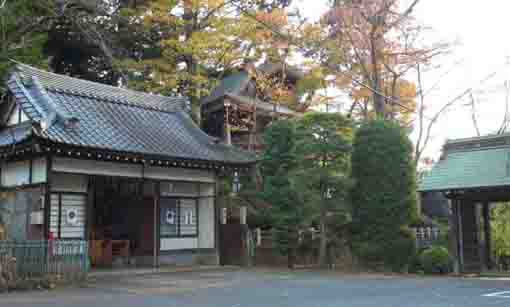
The Bell Tower and the Hall To Pray For Vehicles In Nakayama Hokekyoji
The hall to pray for vehicles is of course on the parking lot in front of the Taikyaku-den hall. And next to it , passing through Hojomon Gate, there is a bell tower standing behind the Great Buddha. In Meiji Era, the tower stood near Ansein Temple, and the bell was donated by Kujo Family. Every day, the bell rings at 6 o'clock in morning and evening. Visitors could strike it only the New Year's Eve.出典・抜粋・引用および参考
正中山法華経寺誌
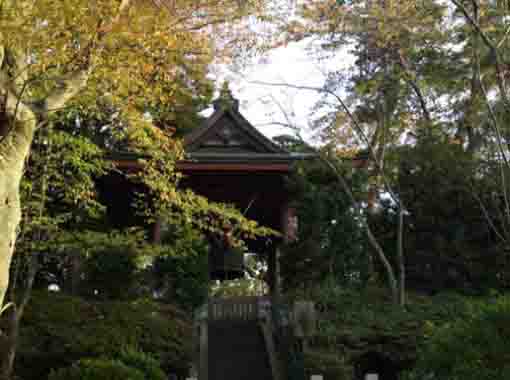
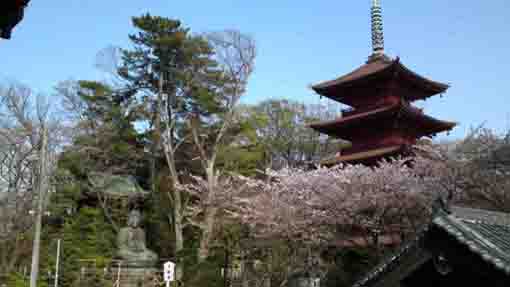
The Ema-do Hall (the gallery of votive horse tablets) In Nakayam Hokekyo-ji
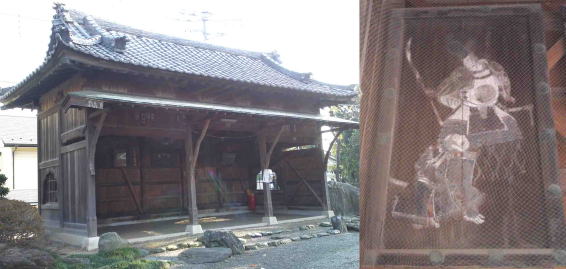
The Ema-do Hall (the gallery of votive horse tablets) In Nakayam Hokekyo-ji
The Ema-do hall stands east-end on the approach to the Soshi-do hall. There are some pictures on the votive horse tablets hanged up on the wall there.
Kafu Nagai, a famous writer Showa era, talked that there was a picture of samurais with headgears on it painted by Yoshitora Ichimosai. However, there is no specific information about it, especially the date of constructoin and its history. Kafu talked that it stands in front of the Kishibojin-do hall, but now Kishibojin-do is over 100 meters farther on the north. Another report published by the librarians at Ichikawacity said that they have no information of it. And according to Edo Meisho Zue, there was a Josho-do hall (a hall some yong priests practiced) drawn in the place of now the Ema-do hall standing.
参考
新版断腸亭日乗 第六巻 株式会社岩波書店
ちくま学芸文庫「江戸名所図会6」
市川図書館レファレンスカウンター「新・参考業務月報2012年10・11月号」
大本山 正中山法華経寺 龍渕橋
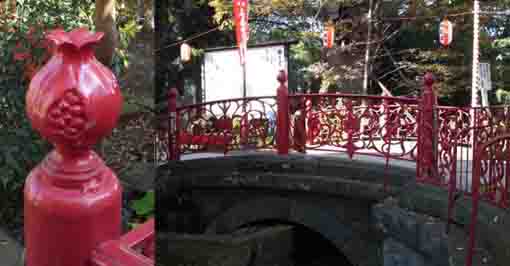
The Ryuen-kyo Bridge (the Ryukan-kyo Bridge) In Nakayama Hokekyo-ji
The Ryuen-kyo bridge was built in 1945. And its newels are decorated with pomegranates the symbol of Kishibojin, the goddess of children. It was a popular spot to seeing fireflies flying over the spring. Now the spring under this bridge dries out, but there might be water flowing in the spring when the bridge had been built.
Thousands of believers and visitors line on this river to the Nio-mon Gate in the New Year's Eve.
出典・抜粋・引用および参考
正中山法華経寺誌
The Remain Of The Kagami-ike Pond (The Mirror Pond) At Nakayama
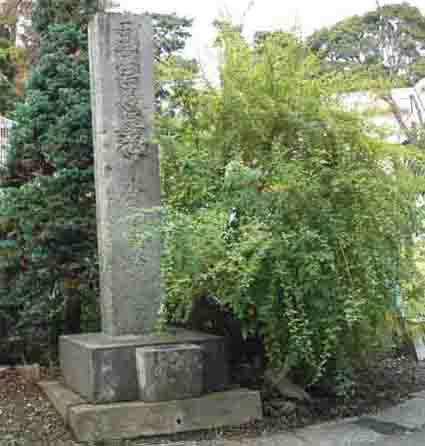
Kagami-Ike-Ato (The site where a pond having the legend of the Founder Nichiren)
In the north end of the main hall of Nakayama Hokekyo-ji Temple, the statue of Kishibojin carved by the founder Nichiren is dedicated at Kishibojin-do hall. In November 11th of 1264, he faced the extremly dangerous situation of his life. When he was attacked, Kisibojin appeared in front of him to help, so he could escape death by hair-breath. After that, he fleed Nakayama of safety and he reflected his face in surface of water in a pond, then he found a scar between his eyebrows. While he recuperated himself, he carved the statue of Kishibojin to gratitude for her, so he dedicated it. The name Kagami-ike (the pond like a mirror) named after this legend. Now there is no water, so a stone monument onlly stands. So the landform around Hokekyo-ji has been changed from Nichiren Ages. At that time, there was Futago-ura creek nearby it. He often went to Kamakura on ship. There is no information when the pond dried out.
出典・抜粋・引用および参考
寶珠山多門院案内札より
市川よみうり「四季折々くらし」2005年8月5日より
正中山法華経寺誌
The Location and Access to Nakayama Hokekyoji Temple
Nakayama Hokekyoji Temple
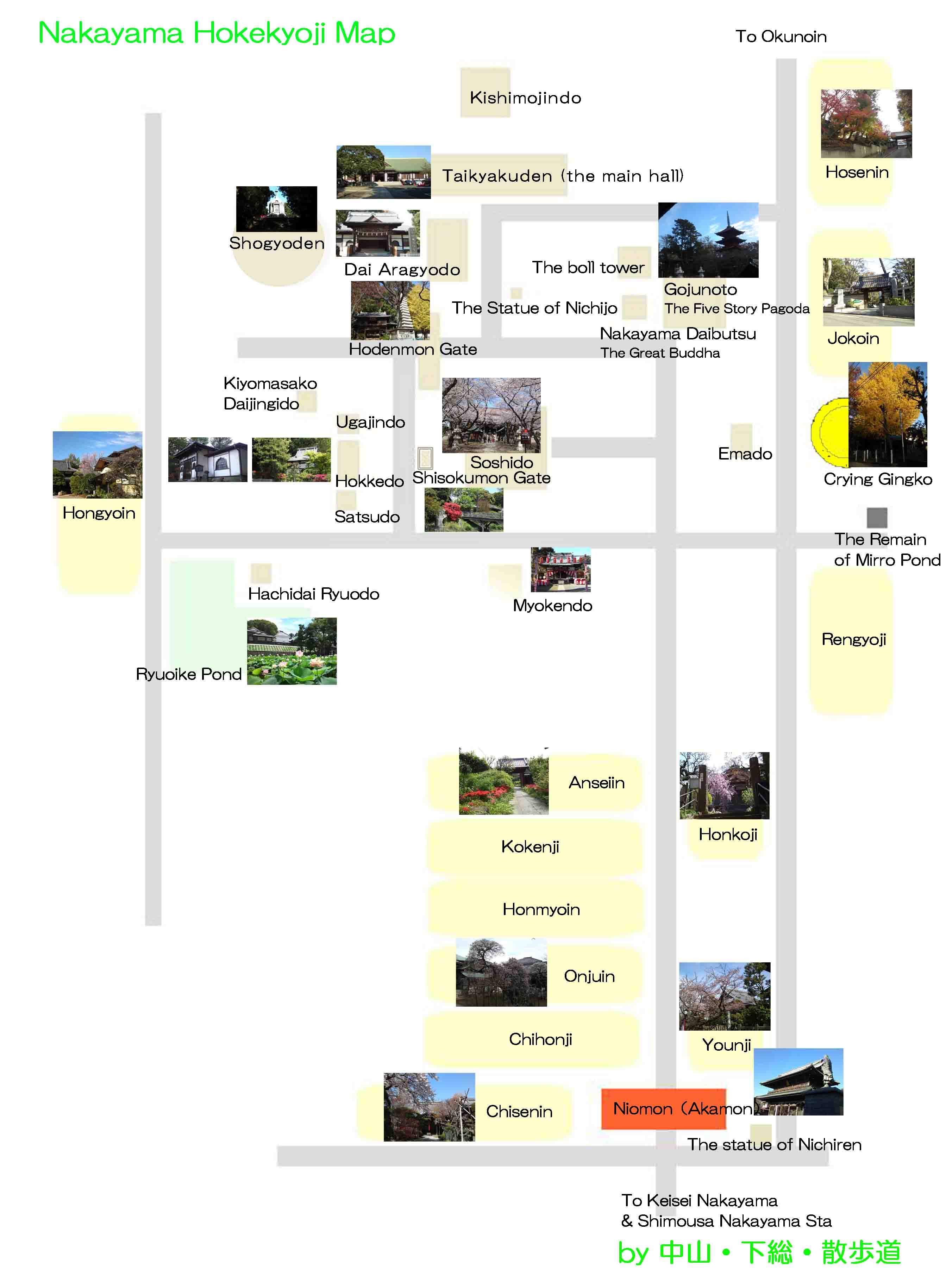
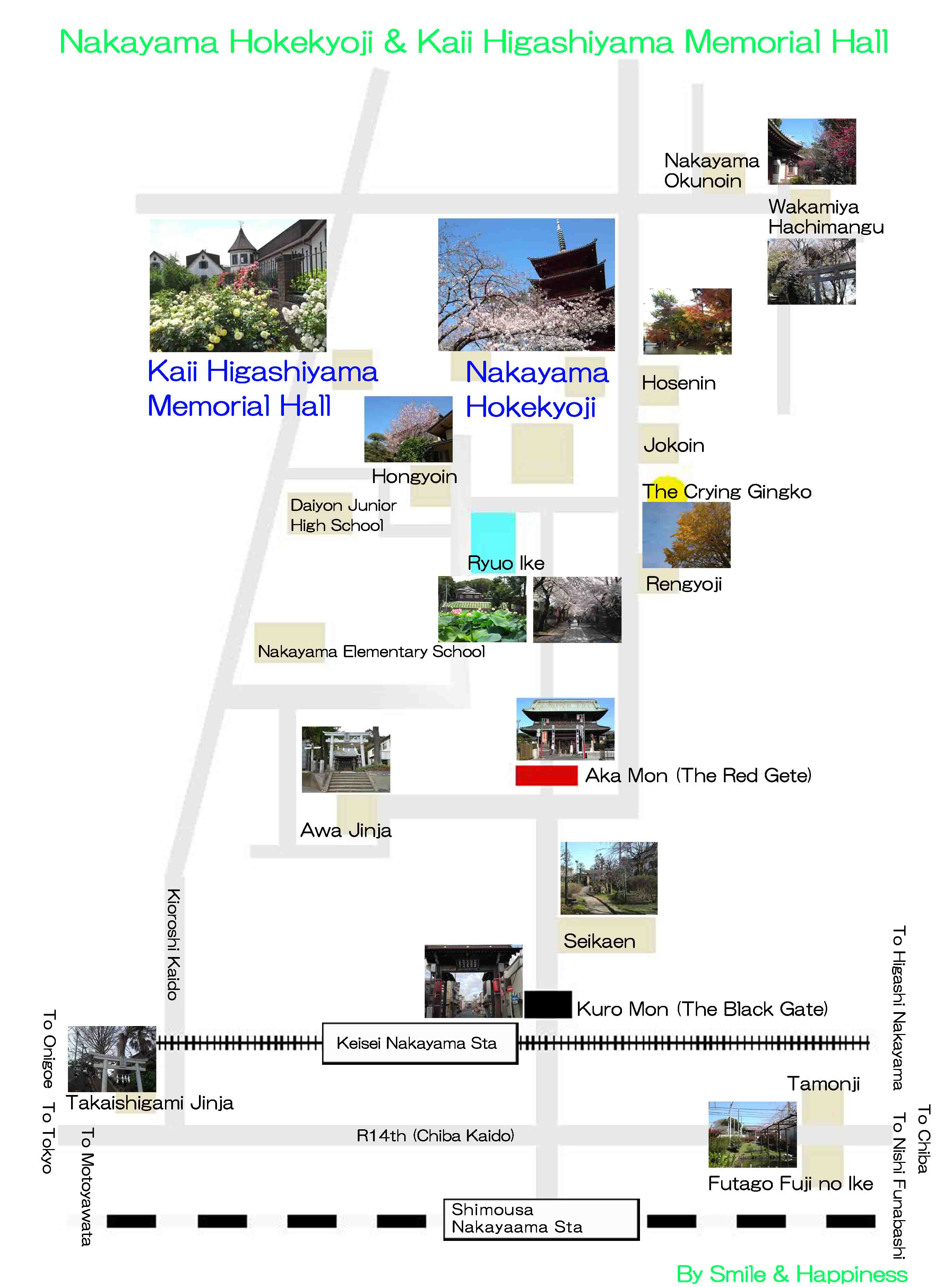
The map near Hokekyoji and Kaii Higashiyama Memorial Hall
PDF of the map near Hokekyoji and Kaii Higashiyama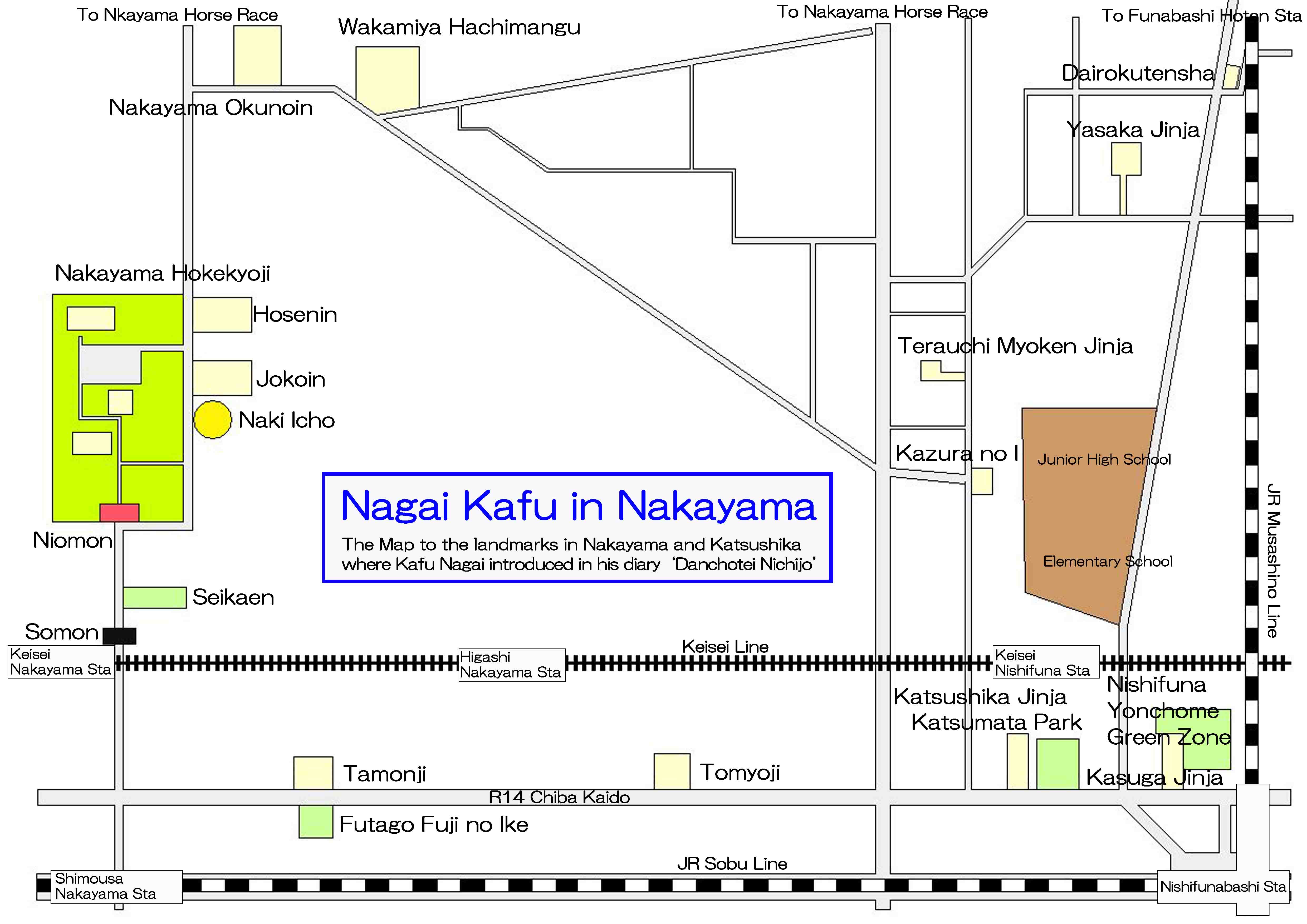
The map to the landmarks where Kafu Nagai introduced in his book
PDF of the map of the noted spots where Kafu Nagai visited- Nakayama Hokekyoji Temple has great accessibilities from both Narita and Haneda International Airport.
- From Narita International Airport, take Keisei-line and get off Keisei-Nakayama Sta, take minimally 40 minutes from Narita Airport.. And also take JR Sobu-express line, transfer the line at Funabashi to Sobu-Local line, get off Shimousa-Nakayama Sta.
- From Haneda International Airport, take Keikyu-line bound to Narita, and get off Keisei-Nakayama Sta.
- From Tokyo Sta, take Sobu-Express line bound to Chiba or Narita, transfer the line to Sobu-Local line bound to Chiba, Tsudanuma, or Nishi-Funabashi at Ichikawa Sta, get off Shimousa-Nakayama Sta.
- From Akihabara Sta, take Sobu line bound to Chiba, get off Shimousa-Nakayama Sta.
- Take 5 minute walk from Keisei-Nakayama Sta, and take 8 minutes walk from Shimousa-Nakayama Sta.
- 2-10-1 Nakayama, Ichikawa-shi, Chiba-pref, Japan
Slide Show Movies of Sakura Blossoms in Nakayama Hokekyoji Temple
The Photo Movie of Cherry Blossoms in Nakayama Hokekyoji in 2020
The Photo Movie of Cherry Blossoms in Nakayama Hokekyoji in 2019
Let's enjoy viewing Sakura Blossoms in Nakayama Hokekyoji!
Sightseeing in Nakayama Shomousa With Mangas
Sightseeing in Nakayama Hokekyoji Temple with Manga (Long Version)
Sightseeing in Nakayama Hokekyoji Temple with Manga (Short Version)
The Landmarks in Nakayama Hokekyouji Temple
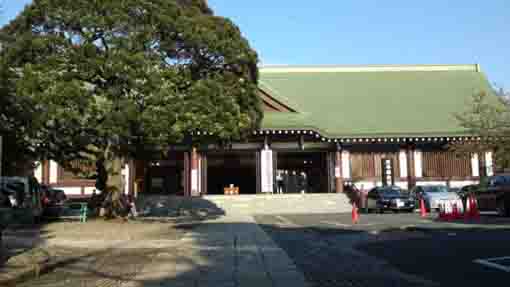
Honin(Taikyakuden)・Kishibojindo(Sonshindo)
Takikyakuden is the main hall of Hokekyoji and it has the business office and Kishibojindo Hall dedicated to the goddess of children on the end of the long corrido of the main hall.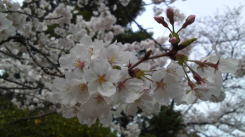
The Four Seasons In Hokekyoji
In spring, there is millions of cherry blossoms in Hokekyoji and in summer, lotus blooms on ryuo-ike pond. In fall, there are beautiful colored leaves. Every season, visitors could enjoy seeing the sights.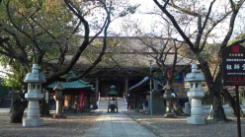
Soshido(Daido), the nationally important cultural property
It is characterized the twin hip-and-gable roof structure (hiyoku-irimoya-style), and hengaku written by Koetsu Honami hangs in front.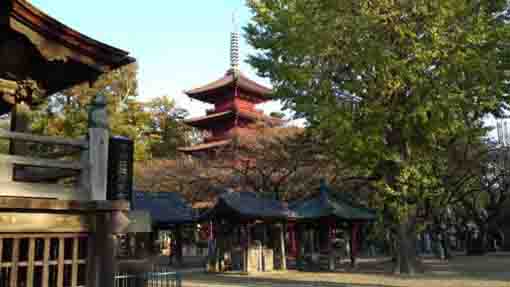
Goju-no-to (the five-story pagoda) , the nationally important cultural property
It was built in early Edo period (1622) by request of Koshitsu Honami supported by Maeda Family in Kaga.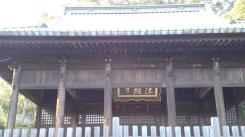
Hokke-do(the nationally important cultural property)
It was built in Kamakura period.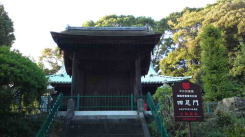
Yon-soku-mon (the nationally important cultural property)
It was moved from Aizen-dou in Kamakura 700 years ago.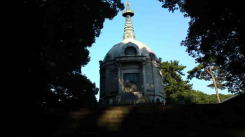
Shougyoden (the treasure hall)
It was designed by the famous architect Chuta Ito, it stores many scripts written by the Founder Nichiren.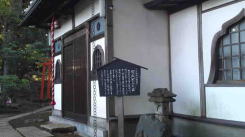
Shogan-jyoujyu-kigan-do (kiyomasa-kou-dai-zingi-do)
It enshrines Kiyomasa Kato, one of the most famous daimyo in Sengoku period.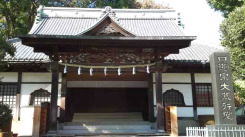
Aragyodo Hall (the hall where Buddhiist priests practice for 100 days in winter severly)
From Nov 1 to Feb 10, hundreds of Buddhist priests practice severly every year.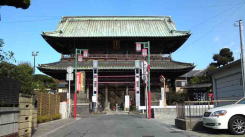
The Nio-mon Gate (The Deva Gate)
The henguku hunged in front of the gate was written by Koetsu Honami, famous artist in Momoyama Period.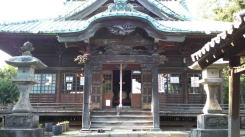
Setsu-do
It was built for worshipping Jurasetsunyo, Kishibozin, Daikokusama.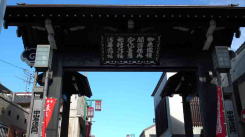
Black Gate(a tangible cultural asset by Ichikawa City)
It is also called Sou-mon (the main gate).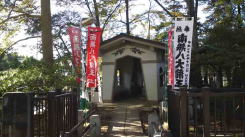
Hachidai-ryuo-do
The founder Nichiren built the small shrine to dedicate the dragon god to pray for rain.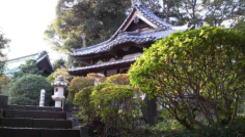
Ugazin-do
It enshrins Ugazin who is the guardian deity of Hokekyou-ji Temple.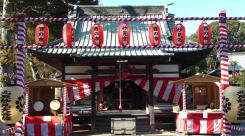
Myouken-do
It dedicates Hokushin Myouken Star that the Chiba Family deeply believed in, Hokekyoji traditionally succeeds. In November, Tori-no-ich is held in the site to dedicate the star.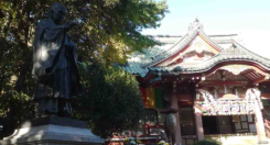
Oku-no-in (the first place where Nichren had preached at)
The founder Nichiren preached first time at the Toki's castle called Wkakamiya Yakata. And Toki built a temple 'Hokkeji', it is the origin of Oku no In.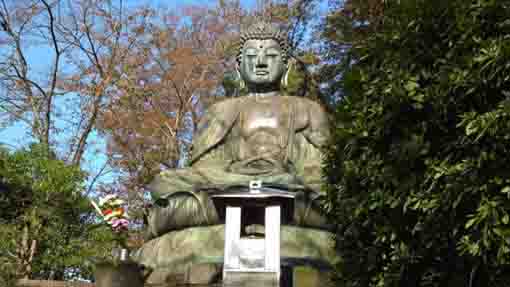
The Great Buddha(The Seated Statue of Shaka Nyorai)
It was built in 1719 by famous caster Ota Suruga-no-kami in Kanda. It is the bigest great Buddha in Chiba prefecture.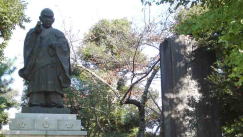
The statue of Nichijo and Naki-Icho
Nichijo was the first abbot of Nakayama Hokekyoji Temple and Naki Icho is a gingko tree having a sad legend.
Kagami-ike-ato (the remain of the pond like a mirror), Emado hall, Hoden-mon gate, Ryuenkyo bridge
There are some other landmarks in Nakayama Hokekyoji Temple.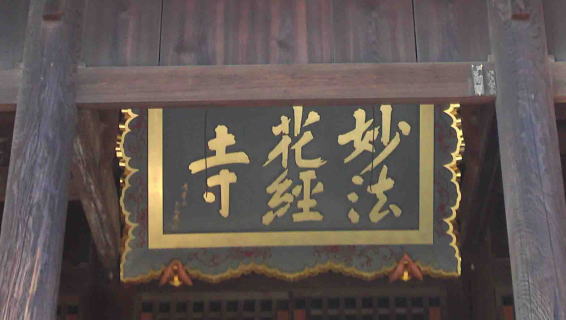
The artists, poets and writers related to Hokekyoji Temple
Koetsu Honami specially remained his calligraphy in Hokekyo-ji Temple, and Shiki Masaoka, Kafu Nagai discribed it well.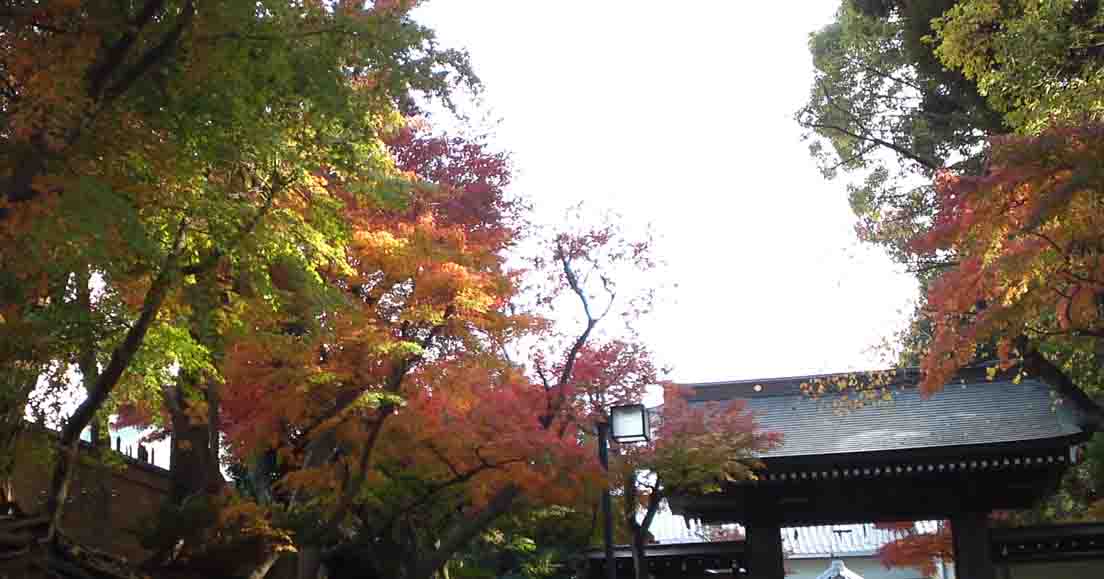
The Tacchu Temples and the Branch Temples in and around Nakayama Hokekyoji Temple
Some tacchue temples are introduced in this page.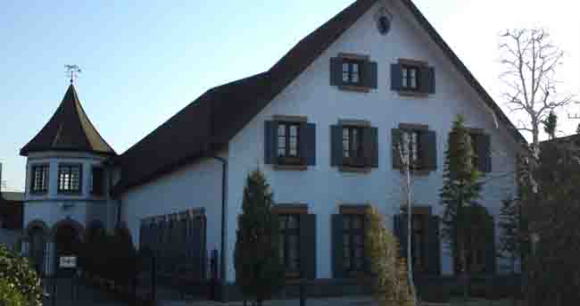
A Walk on the the area around Nakayama Hokekyoji Temple
There are some noted spots, Kaii Higashiyama Memorial Hall and so on, near Hokekyoji.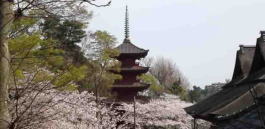
The Popular Viewing Sakura Spot / Nakayama Hokekyoji Temple
Cherry blossoms in Hokekyoji are amazingly wonderful.- 広告 Advertisement -
